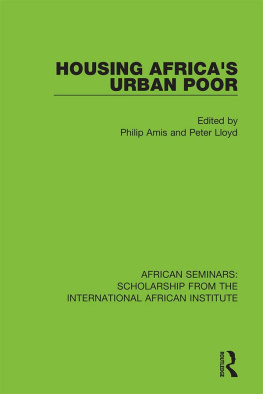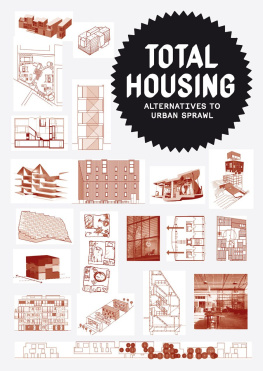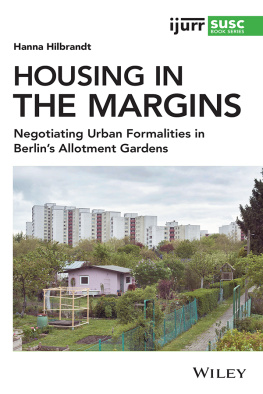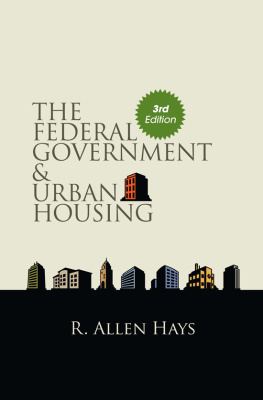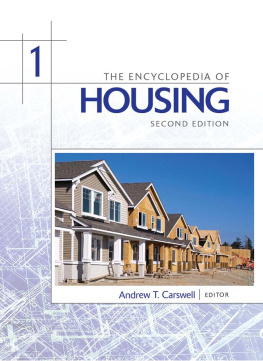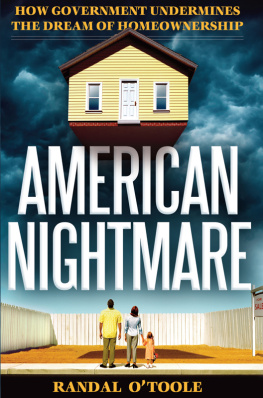ROUTLEDGE LIBRARY EDITIONS: HOUSING POLICY AND HOME OWNERSHIP
Volume 19
HOUSING AND URBAN RENEWAL
First published in 1986 by George Allen & Unwin Ltd
This edition first published in 2021
by Routledge
2 Park Square, Milton Park, Abingdon, Oxon OX14 4RN
and by Routledge
52 Vanderbilt Avenue, New York, NY 10017
Routledge is an imprint of the Taylor & Francis Group, an informa business
1986 Andrew D. Thomas
All rights reserved. No part of this book may be reprinted or reproduced or utilised in any form or by any electronic, mechanical, or other means, now known or hereafter invented, including photocopying and recording, or in any information storage or retrieval system, without permission in writing from the publishers.
Trademark notice: Product or corporate names may be trademarks or registered trademarks, and are used only for identification and explanation without intent to infringe.
British Library Cataloguing in Publication Data
A catalogue record for this book is available from the British Library
ISBN: 978-0-367-64519-9 (Set)
ISBN: 978-1-00-313856-3 (Set) (ebk)
ISBN: 978-0-367-68506-5 (Volume 19) (hbk)
ISBN: 978-1-00-313794-8 (Volume 19) (ebk)
Publishers Note
The publisher has gone to great lengths to ensure the quality of this reprint but points out that some imperfections in the original copies may be apparent.
Disclaimer
The publisher has made every effort to trace copyright holders and would welcome correspondence from those they have been unable to trace.
HOUSING AND URBAN RENEWAL
Residential Decay and Revitalization in the Private Sector
ANDREW D. THOMAS
Andrew D. Thomas, 1986
This book is copyright under the Berne Convention. No reproduction without permission. All rights reserved.
Allen & Unwin (Publishers) Ltd,
40 Museum Street, London WC1A 1LU, UK
Allen & Unwin (Publishers) Ltd,
Park Lane, Hemel Hempstead, Herts HP2 4TE, UK
Allen & Unwin, Inc.,
8 Winchester Place, Winchester, Mass. 01890, USA
Allen & Unwin (Australia) Ltd,
8 Napier Street, North Sydney, NSW 2060, Australia
First published in 1986
British Library Cataloguing in Publication Data
Thomas, Andrew, 1950-
Housing and urban renewal: residential decay and revitalization in the private sector.(Urban and regional studies; 12)
1. Public housingGovernment policyGreat BritainHistory
20th century 2. Housing rehabilitationGreat BritainHistory
20th century
I. Title II. Series
363.5'1'0942 HD7288.78.G7
ISBN 0-04-309111-3
Library of Congress Cataloging-in-Publication Data
Thomas, Andrew D. (Andrew David), 1950-
Housing and urban renewal.
(Urban and regional studies; 12)
Bibliogrpahy: p.
Includes index.
1. HousingEngland. 2. HousingWales. 3. Urban renewalEngland.
4. Urban renewalWales. 1. Title. II. Series: Urban and regional studies
(George Allen & Unwin); 12
HD7334.A3T49 1984 363.5'0942 85-13532
ISBN 0-04-309111-3 (alk. paper)
Set in 10 on 11 point Goudy by V & M Graphics Ltd, Aylesbury, Bucks and printed and bound in Great Britain by
Biddles Ltd, Guildford and King's Lynn
Successive British governments since the mid nineteenth century have been concerned with the condition of privately owned houses. The problem has been tackled by removing the worst substandard property and encouraging the construction of new housing conforming to certain minimum standards. Over time, the emphasis on public-sector involvement has varied. Generally, however, it has been recognized that, if left to itself, the private housing market will fail to provide acceptable conditions for low-income groups; will attempt to maximize profits at the expense of space standards, densities and building quality; and, once housing has been built, will fail to support adequate investment in maintaining the stock. Consequently, legislation has provided for the regulation of quality, for subsidy towards the costs of rehabilitation, and for building by local authorities and housing associations to meet directly the housing needs of poor and disadvantaged groups.
To deal with the condition of existing houses, policies of clearance and improvement have developed along separate but parallel lines. From the late 1960s the emphasis began to swing increasingly towards improvement. But, despite thirty-five years of postwar grant legislation, the clearance activity of the 1950s and 1960s, and successive area-based rehabilitation programmes since 1964, the level of intervention has never matched the scale of the problem. Despite government targets, unsatisfactory housing conditions remain, suggesting that policies have been inevitably inadequate to the task.
As slums have been cleared or improved, new problems have emerged. The benchmark of acceptability has shifted to reflect higher aspirations. Since the Second World War, while progress has been made in the provision of basic amenities, higher levels of disrepair have gradually been recognized as an emerging issue. For the purpose of government policy, poor housing, like poverty, can be held in manageable proportion by the definitions which are adopted. But, while interpretation will vary, the criteria of unfitness in England and Wales have remained largely unchanged for at least fifty years. On this fixed benchmark, the failure of successive policies to prevent further deterioration of the housing stock points to the shortcomings of an attack on what are only the symptoms of a wider market dynamic. If poor housing is a consequence of market forces, then conventional policies of urban renewal can only seek to be ameliorative. Being broadly responsive to wider movements of capital, they will never be able to do better than keep pace with the creation of unsatisfactory housing conditions.
This is a central theme pursued in the following chapters. The aim is to present a contemporary picture of investment trends and policy responses affecting the owner-occupied housing stock. No attempt is made to offer a comprehensive historical account of urban renewal, or to tackle the important and neglected task of cross-tenure analysis. The focus is on owner-occupation, and the policies are specific to England and Wales. But the experience may be relevant to other countries faced with similar trends: a growth in owner-occupation; increasing problems of physical disrepair; and low levels of capital investment in the housing stock.
The bulk of material presented in subsequent chapters is concerned with policy as a response to specific issues of housing condition. In no sense is any attempt made to contribute to a more theoretical debate. However, it is useful to draw out the relationship between current theoretical and ideological questions and the more specific policy issues which concern us here.
Of crucial importance is the nature of urban decline and the role of government. Recent structural explanations of urban processes have given primacy to movements of capital. The implication of inevitably uneven development under capitalism asks fundamental questions about the ability of government to intervene in an effective way. This leads to related questions on the role and function of government. If urban renewal policy is ameliorative intervention, in whose interests does government act, and who bears the costs?



